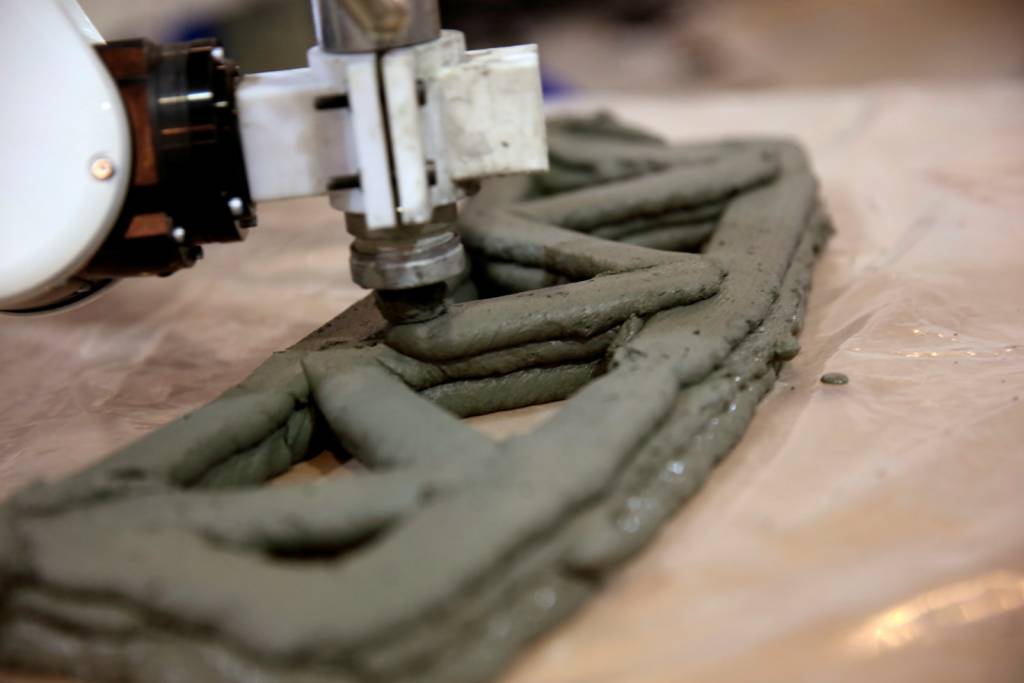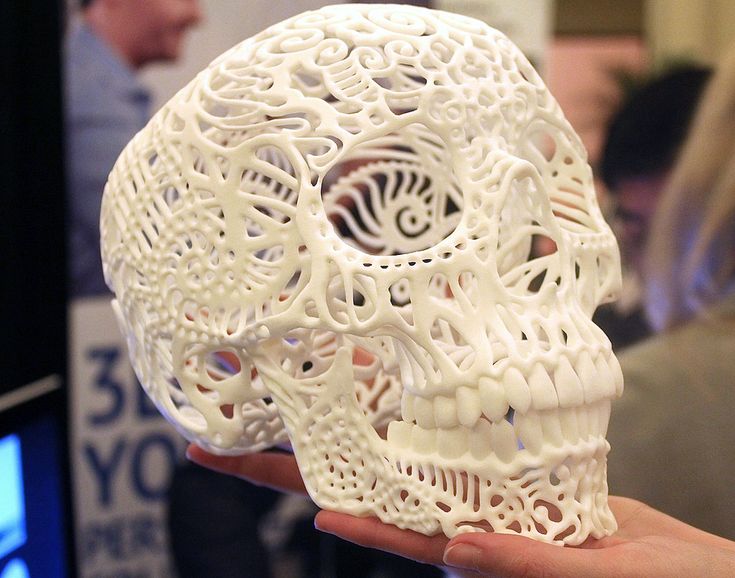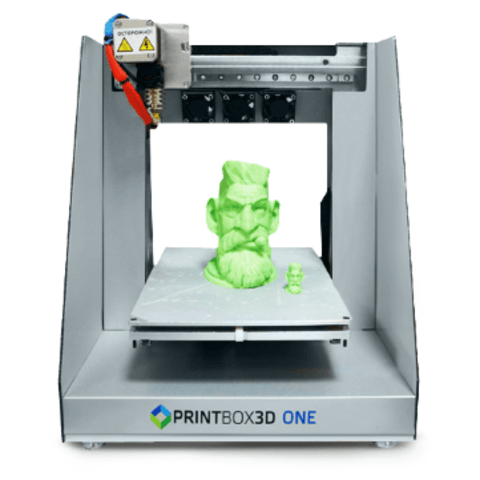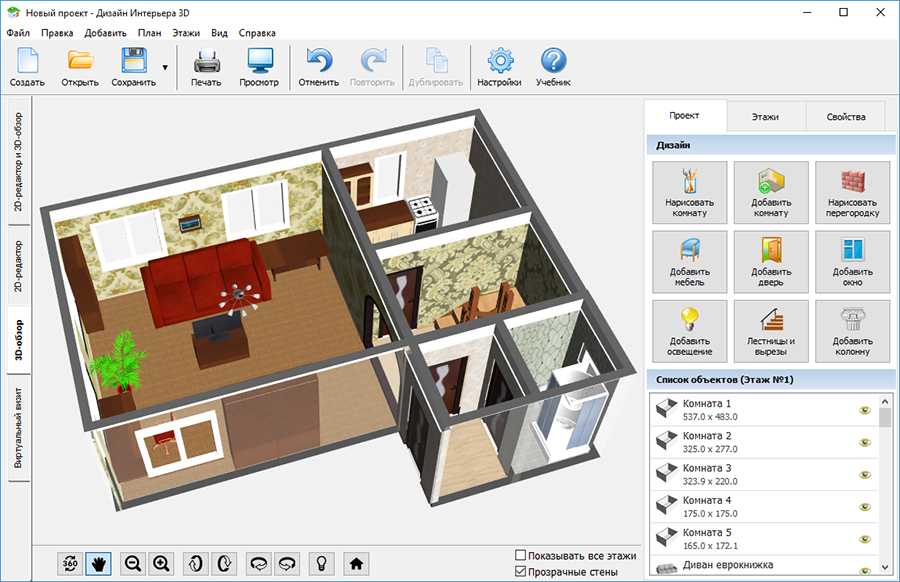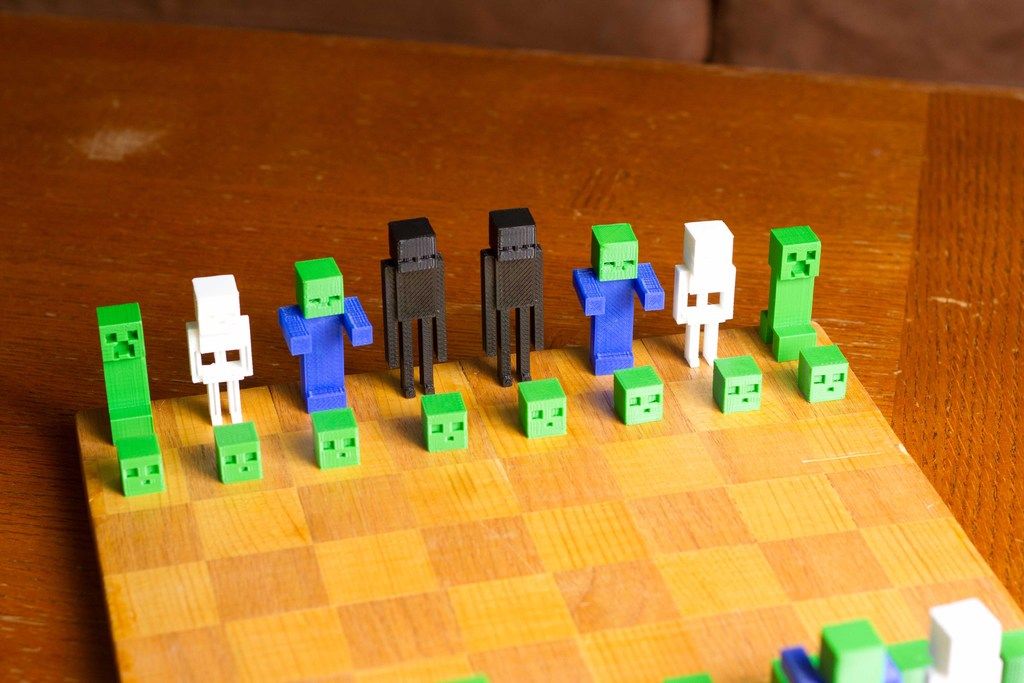3D printer baking
All about 3D Printing for Bakery
If you are a cooking enthusiast or have a bakery business, you should know that 3D printing has a lot to offer. You can print cake molds, cookie cutters, or even coffee foam molds.
If that sounds interesting, keep reading, because we’re just getting started.
📖 What do you want to read?
How can 3D printing help you in the kitchen?
3D printing is a technology (or technology family) that is here to stay. Over time, as it has become more popular, more and more nifty applications have appeared in almost every area of life. The kitchen is perhaps one of the least exploited sectors, due to certain drawbacks that we will explain later, but if we do things right, 3D printing can be of great help to your cooking.
This article will serve as an introduction to the combined universe of cooking and baking with additive manufacturing. We will show you some examples of things that you can do to add a lot of value to your everyday dishes or to your baking business.
Cookie or fondant cutters
If we search in Amazon for “cookie cutter” or “fondant mold”, we will find a series of designs, quite conventional and not very original, that are repeated over and over again with very little variation.
As you can see, originality is conspicuous by its absence. This is where 3D printing can be of great help since, with one of the many modeling programs we have shown you, it will be very simple for you to design your own cookie cutter molds to create the shapes you like best. We have designed a cookie cutter with our logo using Fusion 360 in less than 5 minutes.
You can also find many cookie cutters on Thingiverse and other similar sites using the term “cookie cutter“. Here are some fun examples.
To give you an idea, printing one of these molds would take less than two hours and consume only 20 grams of filament. Once printed, you can use the mold to cut as many cookies or fondant as you want.
Stencil to decorate your coffee
Other quite interesting items are the stencils used to decorate the coffee, usually using cinnamon, cocoa or the coffee foam itself. As in the previous case, the stencils that we can buy in the usual sales sites such as Amazon are very repetitive and have very little personality.
As in the previous case, the stencils that we can buy in the usual sales sites such as Amazon are very repetitive and have very little personality.
If you are looking for something more personal, that can bring value to your coffee business, or you simply want to personalize your morning coffee, it will be very easy to design your own template to add your restaurant’s logo or your favorite superhero’s face. Here are a few examples on thingiverse, which you can find by searching for “coffee stencil“.
Printing one of these stencils will only take about 50 minutes, and will use less than 20 grams of filament. Once you have printed the stencil you can use it as many times as you want, and you can have many to choose from.
Chocolate molds
In our opinion, one of the coolest applications is in chocolate molds. On Amazon you will have a hard time finding anything other than the typical chocolate bar mold, simple letters or geometric shapes.
These molds are pretty bland, and while they provide you enough to make your own chocolate works, you certainly won’t impress anyone with the result.
3D printing gives you the solution. There are a huge amount of molds to create your own chocolate in thingiverse and similar pages under the search term “chocolate mold“. We will show you some of the ones we have found, but there really is a lot of them and we suggest you take a look yourself.
Precautions
Whenever we deal with the topic of food-safe products, we want to make it very clear that conventional 3D printing is not intended to produce parts that are food-safe.
The filament
On the one hand, many filaments are polymers that are quite harmful to the human body if ingested, such as ABS. Others, such as PLA or PETG are, in principle, food-safe filaments in most cases, although this will depend on the specific formulation and the dye used, so you should look at the information provided by the manufacturer.
There are quite a few filaments that, in addition to using a polymer that is in principle food-safe, are certified for this purpose, such as the filamedic filaments of the Tecnikoa brand. These filaments have been certified and are totally antibacterial, so they are a very good option.
These filaments have been certified and are totally antibacterial, so they are a very good option.
The printer
Even if we have chosen a filament that is suitable for food use, we cannot be confident, as the printing process itself is not exactly clean. When the filament is melted, some particles may be carbonated, giving rise to harmful chemicals that we do not want to end up in our food. Similarly, the extruder-melter assembly should be suitable for food use, using, for example, stainless steel nozzles instead of the typical brass ones, which may contain lead.
In addition, you must be sure that the printer in which your product has been printed has no traces of previous prints with materials not suitable for food use, as small traces may remain in the Teflon tubes, the hotend or the hot bed.
Other factors
As you can see, there are many conditions that your printer must meet if you want the parts you print to be suitable for use in baking or food in general. In addition to everything we have told you, it is essential that the procedure is safe and hygienic at all times, to ensure that the parts produced do not contain any virus or pathogen transmitted by the operator who printed them.
In addition to everything we have told you, it is essential that the procedure is safe and hygienic at all times, to ensure that the parts produced do not contain any virus or pathogen transmitted by the operator who printed them.
Conclusion
As you’ve seen, there are many ways you can add value and diversity to your baking recipes using 3D printing. Fondant molds for cakes, cookie cutters, stencils for decorating coffee, molds for making chocolate…
You may also have noticed that not everyone with a 3D printer can guarantee all the conditions necessary for printed products to be fully food safe. In Bitfab, we are experts in professional 3D printing, and we have the right printers and materials, in addition to knowing all the necessary procedures so that you can always be confident and safe.
If you want us to print for you any of these products or any other to bring life to your desserts, do not hesitate to contact us. Similarly, if you’re looking for someone to design for you a cookie cutter or a coffee stencil, in Bitfab we are in contact with professional designers who will gladly help you.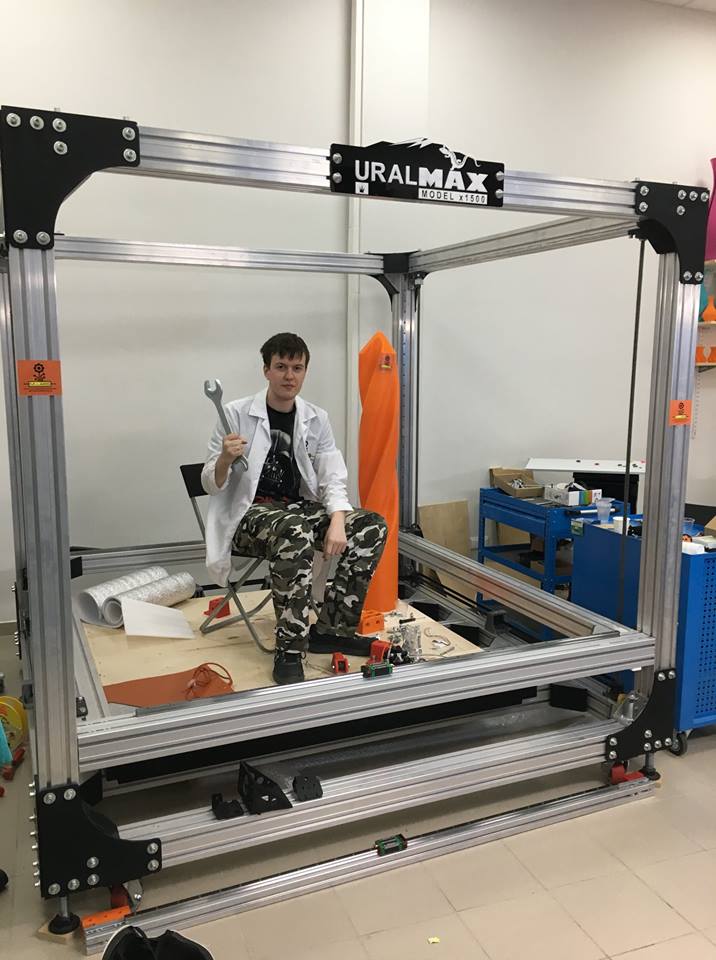
Top food 3D printers available this year
What is food 3D printing?
Although it may sound like something from a sci-fi movie, food 3D printers do actually exist. Edible 3D printing is becoming more and more popular not only for professionals but also for personal use. That said, how does food 3D printing work? To what extent is it similar to standard 3D printing?
Most food 3D printers use extrusion 3D printing technology, much like regular desktop FFF (FDM) 3D printers. Instead of using plastic material, though, food 3D printers use paste-type ingredients. The most common ingredients are chocolate, pancake batter, and cream, although there are many other possibilities (even pizza!). They are 3D printed layer after layer, generally through a syringe-like extruder.
To get a better overview of this niche, we have put together a comprehensive list of food 3D printers on the market. This selection is based on available food 3D printers under $6,000. We also mention a few other food customization solutions, including coffee 3D printing, food ornament 3D printing, and 3D printing food molds.
This selection is based on available food 3D printers under $6,000. We also mention a few other food customization solutions, including coffee 3D printing, food ornament 3D printing, and 3D printing food molds.
Bon appétit!
Best food 3D printers available on the market
| Brand | Product | Build size | Country | Price Approximate starting prices based on supplier-provided information and public data. Prices may vary by region, over time and do not include additional products or services (taxes, shipping, accessories, training, installation, …). | |
|---|---|---|---|---|---|
| Micromake | Food 3D printer | 100 × 100 × 15 mm3.94 × 3.94 × 0.59 in | – | $ 9991 015 €886 £148,907 ¥ | Contact |
| Choc Edge | Choc Creator V2.0 Plus | 180 × 180 × 40 mm7.09 × 7.09 × 1.57 in | – | $ 2,6832 727 €2,380 £399,929 ¥ | Quote |
| ZMorph | VX | 250 × 235 × 165 mm9. 84 × 9.25 × 6.5 in 84 × 9.25 × 6.5 in | – | $ 2,7992 845 €2,483 £417,208 ¥ | Quote |
| byFlow | Focus | 208 × 228 × 150 mm8.19 × 8.98 × 5.91 in | – | $ 3,6303 300 €3,220 £541,073 ¥ | Quote |
| Natural Machines | Foodini | 250 × 165 × 120 mm9.84 × 6.5 × 4.72 in | – | $ 4,0004 066 €3,548 £596,224 ¥ | Quote |
| Mmuse | Chocolate 3D printer | 160 × 120 × 150 mm6.3 × 4.72 × 5.91 in | – | $ 5,4995 590 €4,878 £819,659 ¥ | Quote |
Expand to see more specs
The products in the table are ranked by price (low to high).
| Brand | Product | Build size | Country | Price Approximate starting prices based on supplier-provided information and public data. Prices may vary by region, over time and do not include additional products or services (taxes, shipping, accessories, training, installation, …). | |
|---|---|---|---|---|---|
| Micromake | Food 3D printer | 100 × 100 × 15 mm3. 94 × 3.94 × 0.59 in 94 × 3.94 × 0.59 in | – | $ 9991 015 €886 £148,907 ¥ | Contact manufacturer |
| Choc Edge | Choc Creator V2.0 Plus | 180 × 180 × 40 mm7.09 × 7.09 × 1.57 in | – | $ 2,6832 727 €2,380 £399,929 ¥ | Get a quote |
| ZMorph | VX | 250 × 235 × 165 mm9.84 × 9.25 × 6.5 in | – | $ 2,7992 845 €2,483 £417,208 ¥ | Get a quote |
| byFlow | Focus | 208 × 228 × 150 mm8.19 × 8.98 × 5.91 in | – | $ 3,6303 300 €3,220 £541,073 ¥ | Get a quote |
| Natural Machines | Foodini | 250 × 165 × 120 mm9.84 × 6.5 × 4.72 in | – | $ 4,0004 066 €3,548 £596,224 ¥ | Get a quote |
| Mmuse | Chocolate 3D printer | 160 × 120 × 150 mm6.3 × 4.72 × 5.91 in | – | $ 5,4995 590 €4,878 £819,659 ¥ | Get a quote |
Pros and cons of food 3D printing
Benefits of 3D printing food
Time-saving
Edible 3D printing can be less time-consuming than traditional cooking. Indeed, users can launch a food 3D print and move on to other activities. Once the food 3D print is launched, there is no more need for manual operation.
Indeed, users can launch a food 3D print and move on to other activities. Once the food 3D print is launched, there is no more need for manual operation.
Customization
Food 3D printing enables users to customize their food according to special events or simply to their mood. It can vary from writing a name on a birthday cake to 3D printing a heart-shaped pancake, for instance.
Creativity
Edible 3D printing enables cooking aficionados to unleash even more creativity in the kitchen. Users can imagine and actually create intricate designs. Amazing 3D-printed food artwork already exists!
3D printed food art by Marijn Roovers. Source: Marijn RooversLimits to food 3D printers
Type of food
Not just any sort of food can be 3D printed. The food must be in the form of a paste, such as cream or mashed potatoes.
Partial cookingThe 3D printing process doesn’t encompass every step of a meal’s preparation. For instance, food 3D printers cannot bake a cake or sprinkle oregano over a pizza.
For instance, food 3D printers cannot bake a cake or sprinkle oregano over a pizza.
Price
Food 3D printers are a bit expensive, generally in a price range between $1,000 and $5,000 (although there are exceptions).
Risk of failure
Just like with any other type of 3D printing, food 3D prints can be unsuccessful – too bad if it’s a birthday cake!
Food 3D printers: overview
The byFlow Focus is a compact food 3D printer made by byFlow, a Dutch 3D printing company specialized in edible 3D printing. This food 3D printer targets mostly professionals in the bakery industry.
The Focus works with refillable cartridges containing any kind of paste-type food to create customized meals. Furthermore, users have the possibility to access downloadable recipes.
Contact manufacturer Get a quote Add to comparison
The Choc Edge Choc Creator is a chocolate 3D printer targeting mostly professionals in chocolate and confectionery industries.
In addition, Choc Edge develops three apps, CHOC DRAW, MIX & MATCH and CHOC TEXT, to help users to draw and write on their chocolate 3D prints. A slicing software, ChocPrint, is also available.
Contact manufacturer Get a quote Add to comparison
The Micromake Food 3D printer can 3D print all kinds of paste-type ingredients, such as tomato sauce, chocolate sauce, and salad sauce. Also, the removable heated build plate is able to bake ingredients such as pancake batter.
Contact manufacturer Add to comparison
The Mmuse Chocolate 3D printer is a closed-framed chocolate 3D printer made by Muse, a manufacturer from China. This 3D printer uses chocolate beans as consumables: they melt in the extruder, just as with regular FFF/FDM 3D printing.
Contact manufacturer Get a quote Add to comparison
The Natural Machines Foodini is a 3D printer able to 3D print all kinds of paste-type food. Users can fill the Foodini’s capsules with any type of paste food they wish.
Users can fill the Foodini’s capsules with any type of paste food they wish.
Furthermore, if users choose a specific Foodini recipe, the 3D printer gives instructions on which ingredients to insert into the capsules.
Contact manufacturer Get a quote Add to comparison
Thanks to its thick-paste extruder, the ZMorph VX can 3D print ceramics as well as food!
This multifunctional 3D printer is indeed able 3D print with chocolate, cookie dough, cream cheese, frosting and more.
In addition to paste extrusion, the VX is features CNC milling and laser engraving capabilities.
Contact manufacturer Get a quote Add to comparison
Special mention: Cakewalk
- Materials: chocolate, meringue, royal icing, ketchup, guacamole, cream cheese, butter, mashed vegetables, Swiss butter cream
- Price:
- During KS campaign: €49 to €89
- After KS = €119
Cakewalk 3D is a precise and practical extruder that converts your desktop 3D printer into a food printer. The screw-in extruder is designed to be easily installed on any type of Cartesian 3D printer. All parts are food-safe and easily washable in your dishwasher.
The screw-in extruder is designed to be easily installed on any type of Cartesian 3D printer. All parts are food-safe and easily washable in your dishwasher.
To adapt Cakewalk 3D to your printer, you just need to 3D print 3 or 4 pieces of support in plastic. Disassembling your plastic extruder, screwing in the support parts, and connecting the motor to your card takes less than 30 min. The extruder then works with your usual slicer.
Cakewalk3D Kickstarter campaign
Edible 3D printing: who is it for?
Restaurants and bakeries
Edible 3D printing is indeed very useful for professionals in the food industry. 3D printed food can be attractive to new customers seeking different food experiences. A restaurant serving 3D-printed food, the Food Ink. pop-up store already exists.
Industrial food production
In the industrial food production sector, edible 3D printing allows manufacturers to vary their product ranges with new creations.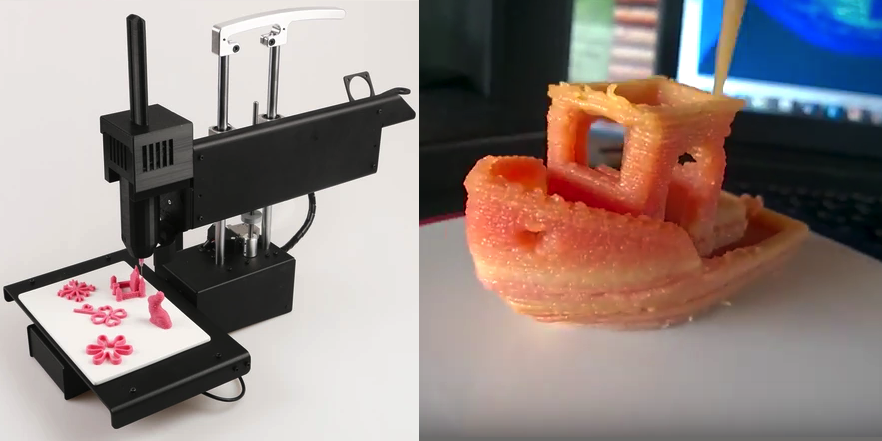 Furthermore, food 3D printers can achieve a high level of precision. Barilla, an Italian food company, 3D prints some of its pasta products.
Furthermore, food 3D printers can achieve a high level of precision. Barilla, an Italian food company, 3D prints some of its pasta products.
Food 3D printing at home
Food 3D printers are also adapted for personal use. They allow for more creativity in the kitchen with food customization.
What food can be 3D printed?
Ingredients
Virtually any type of fresh food can be 3D printed as long as it’s a paste, or “purée”. For instance, ingredients could be:
- Chocolate, candy and sugars
- Pancake batter or cookie dough
- Dairy products
- Pasta, wheats and grains
- Fruits and vegetables
Even pizza can be partly 3D printed! However, users will have to sprinkle their favorite toppings manually.
3D printed pizza by Beehex. Source: BeehexFood 3D models
To 3D print food, we can let our imagination take over. Users indeed have the opportunity to create their own food 3D models with special CAD software. However, it is also possible to directly download any 3D model on dedicated STL file websites.
Users indeed have the opportunity to create their own food 3D models with special CAD software. However, it is also possible to directly download any 3D model on dedicated STL file websites.
How much does a food 3D printer cost?
Food 3D printer price
There are various price points for food 3D printers. Prices can depend on the food 3D printer’s build volume and/or on the variety of 3D printable ingredients it is compatible with.
In general, the minimum price for a food 3D printer is around $1,000 (although the PancakeBot is available for under $400). However, prices may decrease in the future, just as they have for regular extrusion (FFF/FDM) 3D printers.
Other promising food 3D printing applications
Here are a few industries where food 3D printing is already beneficial.
Sustainable food
Food 3D printing could be a part of the answer to the world hunger crisis. Indeed, some food 3D printers use hydrocolloids as a consumable.
Indeed, some food 3D printers use hydrocolloids as a consumable.
This chemical, gel-like substance can mimic food. 3D printed meals with hydrocolloids could also include sustainable ingredients, such as algae.
Medical
As explained above, certain food 3D printers use hydrocolloids to create different shapes and textures for meals. Also, like the EU’s PERFORMANCE program is proving, it can be very useful to make softer meals for people with chewing or digestion problems, especially elders.
In addition, medicine can be presented in the shape of yummy food, instead of pills or powder.
Army
The US Army is carrying out scientific research to provide personalized food for their soldiers.
According to Lauren Oleksyk, a food technologist leading the team at the Army’s Natick research center, a sensor installed in soldiers’ bodies could detect their specific dietary needs. This sensor would be interfaced with a food 3D printer, to produce customized meals.
Aerospace: NASA food 3D printer
Beehex, an American startup, has received a grant from NASA to develop a food 3D printer.
Indeed, the aerospace agency aims to allow astronauts to produce their own food during long-term space missions to go to Mars!
3D printed food ecosystem
Food ornament 3D printers
Coffee 3D printers: 3D printing on coffee
There seems to be no connection between the portrait of the Mona Lisa and coffee. However, thanks to coffee 3D printers, it is possible to see the beautiful smiling lady in a cup of coffee. Indeed, a combination between 3D printing and inkjet printing technologies allows these machines to draw images on top of any foam-covered beverage.
As such, the Ripple Maker, a coffee 3D printer made by Ripples, can help users print “their own selfies, favorite quotes, or special messages and images on their drinks”. Another existing coffee printer is the Lixian 3D CafeMaker.
Cake ornament 3D printers
Bakery industry professionals also use 3D printers to adorn cakes or pastries. Thanks to edible sheets of paper and ink, any kind of image (including photos) can be 3D printed to decorate cakes.
Food extruders
If users already have an FFF 3D printer at home, another solution exists to 3D print food: food extruders. These tools generally feature universal compatibilities with regular extrusion 3D printers. Some of them, such as the Structur3D Discov3ry, allow 3D print with non-only edible food and clay, silicone, etc. An open-source extruder, the BotBQ Extruder, can 3D print raw meat – a good fit for your future barbecue!
3D printed food molds
3D printers can also 3D print very useful tools for food production: this is the case of 3D printed food molds. Users can create their own molds and print them in 3D to customize cakes, for example.
Users can create their own molds and print them in 3D to customize cakes, for example.
Conclusion
Food 3D printers are suitable for professional, industrial, and personal use-cases. Only paste-type ingredients are printable, but a wide range of food – from pizzas to cakes – can be created. As 3D-printed food can be customized according to users’ needs, it can be helpful in many fields, such as medicine.
3D printed food may also represent a hope for the world hunger crisis in the future. What food 3D printers are still missing is the ability to actually cook or bake. That is why cooking robots could be more and more popular in the future.
90,000 characteristics, pros and cons of each model07.04.2021
Content
-
- What is a food 3D printer
- Field of use
- used raw materials
- 9000 9000 9000 9000
- Top 10 Best Food Printers: A List of the Most Current Models
- 1.
 PancakeBot 2.0
PancakeBot 2.0 - 2. Wiiboox Sweetin
- 3. Choc Creator V2.0 Plus
- 4. Choc Creator V2.0 Plus Food 3D Printer with Cooling Chamber
- 5. byFlow Focus
- 6. Chefjet Pro
- 7. Foodini
- 8. Mmuse – Chocolate 3D Printer Commercial ArtcakesOT7 .90BOT Printer F5
- 1.
- 10. ZMorph VX
- What is a food 3D printer
- Selection guide
- Output
A food printer is a high-tech device that is used to create culinary masterpieces. The decorative design of food products has reached a new level thanks to the use of modern technologies: high-quality and large-format printing is carried out on cakes, waffles, pancakes and even coffee. Here are the top best 3D food printers in different price categories for people who are fond of cooking.
What is a 3D food printer
The main feature of a food 3D printer is the raw materials used: instead of printing ink, the device is filled with edible ingredients.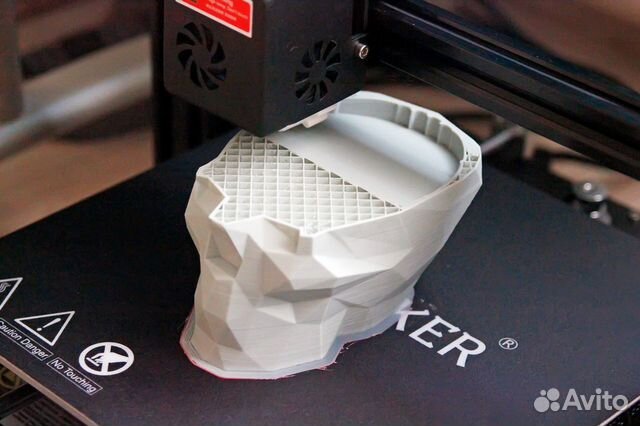 The database stores a large number of different recipes, and in order to print a dish, you just need to select one of them and activate the printing process. The final product is layered on a work surface or on a plate: it can be baked in the oven or sent to the freezer.
The database stores a large number of different recipes, and in order to print a dish, you just need to select one of them and activate the printing process. The final product is layered on a work surface or on a plate: it can be baked in the oven or sent to the freezer.
Application
Futuristic 3D Printed Sugar Candy
Cookies printed with icing
Chocolate logos of famous companies
Cream Photo Print
Buying a food 3D printer is worth the owners of coffee houses, author's bakeries and private workshops. The finished product has a unique shape and bright appearance. Food printers are often used to create custom wedding cakes, cartoon character cookies, Christmas gingerbread cookies, and so on. The possibilities of a baker who owns such a device are endless: the main thing is to buy quality products.
Raw materials used
The following ingredients are used as raw materials:
-
Chocolate without additives and impurities;
-
Mastic;
-
Sugar;
-
Whipped cottage cheese;
-
Vegetable and fruit pastes;
-
Fish and meat pates;
-
Flour;
-
Cheese, etc.

The confectionery pattern is applied to sugar, wafer or shock transfer paper. The first type has a sweetish aftertaste and aroma of vanilla. Due to the snow-white surface, no additional coating is required: the drawings look bright and clear. The wafer paper is made from rice flour and does not have a special taste, due to the light shade, the final drawings look less clear. Shock transfer paper is completely transparent and is suitable for transferring a design to a product (for example, a cake). For the packaging of finished products, food-grade plastic for a 3D printer is used.
Interesting! Food printers are involved in waste reduction. Unattractive fruit and confectionery leftovers are used in the preparation of printing mixes. This makes it possible to use the means of production more efficiently.
Types of 3D food printers
Cooking enthusiasts can take advantage of the following food printing devices:
-
Food 3D printers are devices that print dishes whose recipes are listed in a database.
 The final product is layer-by-layer superimposed on the work surface, and the raw material comes from filled cartridges;
The final product is layer-by-layer superimposed on the work surface, and the raw material comes from filled cartridges; -
Confectionery printers are used to transfer images onto specialty paper or to design small confectionery products such as candies. Such printers print an image on pre-prepared paper: rice, wafer or shock transfer;
-
Food plotters transfer the image not to paper, but directly to the finished product. For example, a plotter is used to transfer an image directly onto a cake.
There are several types of food 3D printers:
-
Extrusion - paint is applied to the surface before the dish is created. The process is controlled by the computer with the loaded image. The system has an extruder that heats the food mixture, and the distribution of raw materials depends on the print head. The raw material is loaded into a syringe placed in the head. This means that in order to combine different shades, you have to periodically stop printing and change the syringe;
-
A carousel-type food 3D printer also has an extruder, but its main feature is the method of feeding raw materials: the containers rotate around the working surface, the supply and dosage of the material used depends on the recipe specified in the program.
 The storage can contain countless recipes, and operation does not cause difficulties even for an inexperienced user.
The storage can contain countless recipes, and operation does not cause difficulties even for an inexperienced user.
Popular brands
Eminent manufacturers offer the best value for money food 3D printer. Quality devices provide accurate printing, high speed, durability, simplicity and ease of use.
Wiibox
This company manufactures 3D printers with high build quality and high productivity. These are universal mechanisms that fill both chocolate paste and mashed potatoes. Numerous positive reviews confirm the high quality of Wiibox products.
byFlow
The Dutch company byFlow specializes in food printing technology. The pursuit of excellence helps the company open up new horizons: the technique prints products from spinach, meat emulsion and other materials. High build quality, ease of use and durability - all these characteristics are applicable to the products of this company.
Choc Edge
Choc Edge is committed to revolutionizing the world of chocolate making. Numerous experiments and focus on consumer feedback help to create more powerful devices that provide the optimal temperature for preparing and storing chocolate figures.
Numerous experiments and focus on consumer feedback help to create more powerful devices that provide the optimal temperature for preparing and storing chocolate figures.
Attention! Printing dishes helps save time on cooking: instead of culinary worries, the user can simply activate the printing process and get on with other things.
Free shipping
Add to compare
Item added to compare Go
| Manufacturer | Choc Edge |
Available on credit. To checkout, add the product to the cart and follow the instructions Go
| Manufacturer | Wiiboox |
Free Shipping
Add to compare
Item added to compare Go
| Manufacturer | Choc Edge |
Top 10 Best Food Printers: List of the Most Current Models
Before you buy a food 3D printer, you need to familiarize yourself with the most popular devices on the world market.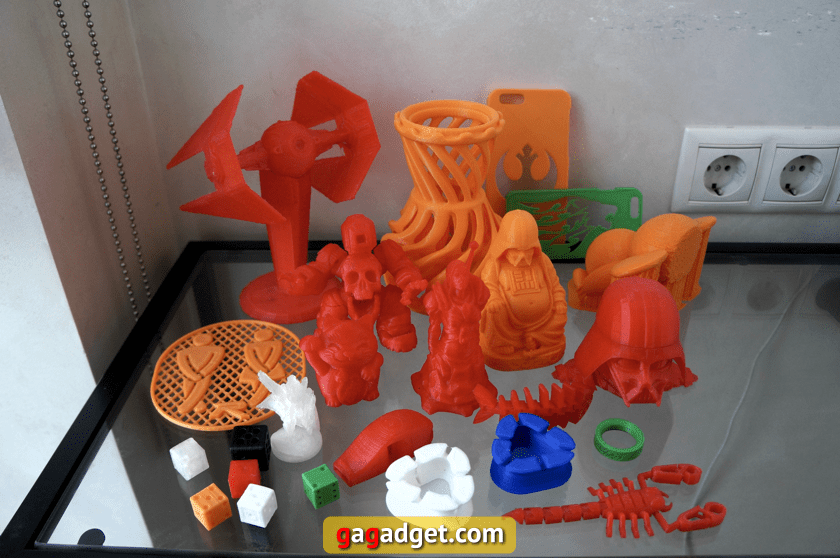 The top is based on ratings and customer reviews.
The top is based on ratings and customer reviews.
1. PancakeBot 2.0
PancakeBot 2.0 is easy to use, which means it's suitable for inexperienced users too. Users can choose from suggested designs in the software, or create their own. Used to print pancakes.
Pros:
-
Ease of operation;
-
A wide range of proposed projects;
-
High speed.
Cons:
2. Wiiboox Sweetin
Buying a food printer from Wiiboox is worth not only for confectionery lovers, but also for ordinary chefs: the device prints cakes, cookies and even mashed potatoes. The main raw materials can be meat, cheese, chocolate, jam, mashed potatoes, dough and much more. A convenient touch panel helps to set the desired mode of operation, and a stylish appearance complements the interior of any establishment.
Pros:
-
Versatility: the ability to print not only sweet dishes, but also side dishes;
-
Attractive appearance;
-
High build quality;
-
Convenient control by touch panel.

Cons:
-
High price.
3. Choc Creator V2.0 Plus
When talking about which chocolate 3D printer to buy, it is worth mentioning the numerous advantages of Choc Creator V2.0 Plus. The new model has become more perfect: the developers have worked hard to eliminate the shortcomings of the previous version. The modern model has small dimensions, thanks to which it can be used in any kitchen, and the uniform heating of the syringe ensures high-quality and uninterrupted operation. In practice, the chocolate printer has shown tremendous potential: it prints complex figures from chocolate.
Pros of :
-
Attractive appearance;
-
Uninterrupted work;
-
Durability;
-
The ability to create durable and beautiful chocolate figures.
Cons :
4.
 Choc Creator V2.0 Plus 3D food printer with cold chamber
Choc Creator V2.0 Plus 3D food printer with cold chamber
The new version of the Choc Creator V2.0 Plus printer is equipped with cooling chambers by popular demand. Users say that maintaining the optimal temperature in the room to preserve the integrity of chocolate figures is too problematic: therefore, the new device cools the raw materials. The price of a food 3D printer with a cooling system is slightly higher than a classic one, but the high performance of the final product justifies any costs.
Pros of :
-
Availability of a cooling system for finished products;
-
High printing precision;
-
Long service life;
-
Ease of use: You can turn the fans on and off with the side buttons.
Cons :
-
High price.
Attention! Confectionery food 3D printers are often used by artists to create edible masterpieces.
This is a unique technology that helps to unleash the creative potential of the chef.
5. byFlow Focus
Food printer from the Dutch company byFlow, which specializes in 3D printing of food. The compact high-tech device is used for the bakery industry, and the cartridges are suitable for the application of any pasty ingredients.
Pros:
Cons:
6. Chefjet Pro
Buying a ChefJet Pro food printer is a must for people who dream of making bright and stylish sweets. The device is created on the principle of inkjet printing: sugar-containing powder materials are used instead of paints. The final product is made by powder layering. The printer is suitable for combining different shades and creating gradients.
Pros:
-
The ability to create unique flavors;
-
Neat and bright printing;
-
Aesthetic appearance of the device.

Cons:
-
High price.
7. Foodini
The 3D food printer from Foodini works on the principle of a stationary printer, but instead of printing inks, layer-by-layer imposition of edible raw materials is used: dough, cream, chocolate, cream, etc. The device is versatile: the user himself can choose the material, or use ready-made cartridges with products.
Pros:
-
Practicality;
-
High build quality;
-
Attractive appearance;
-
Availability of an online platform with unique recipes.
Cons:
8. Mmuse – Chocolate 3D Printer
The closed MMuse 3D printer is suitable for chocolate printing. Chocolate beans are used as raw materials: they are heated in an extruder and fed to the work surface through the print head.
Pros:
Cons:
9. ZBOT Commercial Art Pancakes Printer F5
ZBOT Commercial Art Pancakes Printer F5 3D Printer
A food printer from Chinese manufacturers is used in the process of making pancakes of various shapes. Ease of operation allows the device to be used by children under adult supervision.
Pros:
-
Ease of operation;
-
High build quality;
-
Affordable cost.
Cons:
10. ZMorph VX
A multifunctional 3D printer capable of printing not only food, but also rubber, ABS plastic, polylactide, PVA, nylon, elastic and metal materials. The product is able to print with chocolate, butter, cookies, icing and other ingredients. In addition, there is a function of engraving and CNC milling.
Pros:
Cons:
-
High price.

Selection guide
The modern market offers a wide range of food printers. Before making a purchase, you need to carefully study the characteristics of each model and build on your own preferences. Experts have created several recommendations for choosing:
-
In case you want to create realistic images for confectionery 3D printing, pay attention to the diameter of the nozzle: the narrower it is, the more accurate the image will be;
-
It is better for people living in regions with a warm climate to purchase chocolate 3D printers with a cooling system: such devices ensure that the figurines are kept at the optimum temperature;
-
The possibility of self-refilling the cartridge is the most practical and economical way to operate the printer;
-
Print speed is an important consideration for restaurant owners. Large batches of dishes must be produced quickly, and for home use this is not a very strict selection criterion.

Output
In the catalog of our online store, you can choose the best food printers from famous brands to create culinary masterpieces. Explore our range, learn about the characteristics of each printer and make great purchases.
#Useful
Expert in the field of additive and subtractive technologies, 3D equipment and CNC machines with over 10 years of experience.
Share
all materials
DIY cookies / Sudo Null IT News
You may have read the post "Prodlenka" about the children's acquaintance with the profession of a programmer - How we explained to children who a programmer is (I remind you, "Prodlenka" makes interesting free events for children with the best Russian and foreign specialists. And broadcast freely throughout the country).
The next lecture (February 22) was about confectioners. An idea came up - is it possible to make a "bundle" between programmers (IT-specialties) and confectionery? I talked with the organizers - it turned out that there are enough intersections: there are 3D printers that print with sugar, you can 3D model molds for pouring chocolate, there are delta 3D printers for creating pastries, there are chocolate 3D printers.
But we stopped at the simplest - this is the creation of 3D cookie cutters.
Needed:
- create a 3d model of the form,
- 3d print,
- make cookies,
- treat the guys at the event
There were only a few days left before the start of the event, and there will be a story about how everything was - from idea to implementation.
Find/make a cookie shape
Cookie molds are not something new, I remember there was a post about them on Habré, and we printed a mold in hackspace, and the participants baked, and this is what happened:0057 .
But I wanted to make them themed cookies - by February 23 (the event about confectioners was on February 22). I immediately thought of making a star, but this is somehow not original, so I decided to make a mold for an airplane.
After a short search, I settled on this - meet the T-50, a 5th generation fighter:
Here is its model:
Based on this model, using the free and open graphic editor GIMP, a mask was made:
The mask for the shape is ready, now you need to make a 3d model.
Make a 3d model of a cookie cutter
The question of where to do it was solved simply - the cookiecaster.com service. This is a free specialized service for creating cookie cutters:
The principle of operation of the service is simple - with the mouse we click on the working area, and lines are created between the points where we clicked, after completing the shape (clicking on the starting point) - the shape is displayed on the right above is a preview.
For example, let's make a simple shape, a triangle:
We see on the right the display of the shape created by the program (in addition to the outline, the program creates a small frame at the initial level - this increases the strength of the model). It is also possible to edit the "nodes" of the model, and we can click on the "edges" and make convex / convex contours.
Below the preview screen are the settings for the size of the created 3D model:
- the maximum size of the form (Large 4") - (4 inches = 10 cm)
- height (0. 65") approx. 1.5 cm
65") approx. 1.5 cm
- wall thickness - 2mm
You can change these settings to obtain molds of different sizes.
And below is the button to download the cookie form - Download 3D File . Click and get cooke.stl file (3d model in STL format).
The service has the ability to upload a picture - Trace . In this case, you can "circle" the contour in the picture.
Let's load our template. And we can “click” along the contour.
But to automate contour tracing, the service provides a function "Magic trace" - this function allows you to find the contour of an object. We click on it, and after that we click on the “body” of our airplane contour, and the system itself creates the contour. Here's what happened:
3D models were made - for different sizes of cookies. STL files can be downloaded from here.
This is how the created STL models look like in the Cura 3D printing program:
You can read more about the print time estimation in the Cura program here (no 3D printer required).
3D print
The guys from the Moscow hackspace Neuron agreed to help in printing the molds (3D printing laboratory, thanks to Ivan).
This is what it looked like:
Printing process:
And the finished mold:
Making cookies
Julia (prodlenka project manager) helped in making cookies.
Here are her photos of the making process, based on the recipe:
The dough is made, rolled out, and on it we make cookies with the help of molds:
And after that we bake in the oven:
Result
Here is a story about 3D cookies at the event:
And Yulia demonstrates the result:
A fragment of the broadcast about 3D cookies.
Bonuses
If you want to make a 3D form using the cookiecaster service, then there is a bonus for you.


